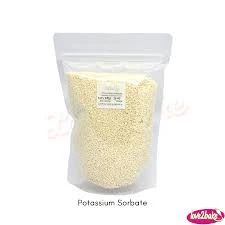
Current Trends in Isopropyl Alcohol Pricing and Market Analysis
Understanding the Price Trends of Isopropyl Alcohol
Isopropyl alcohol (IPA), also known as isopropanol, has become an essential chemical compound utilized in a myriad of applications, ranging from industrial cleaning to hand sanitizers. The demand for isopropyl alcohol surged dramatically during the COVID-19 pandemic, causing substantial fluctuations in pricing that have continued into the post-pandemic period. Understanding the price trends of isopropyl alcohol and the factors influencing them is crucial for both consumers and businesses.
The Market Dynamics of Isopropyl Alcohol
The price of isopropyl alcohol is influenced by various market dynamics, including raw material costs, production capabilities, and global demand and supply. The primary feedstocks for IPA production are propylene and caustic soda. Fluctuations in the prices of these raw materials directly impact the cost of isopropyl alcohol. For instance, any significant rise in crude oil prices could cause an increase in the cost of propylene, subsequently driving up the price of IPA.
Moreover, the production capacity and efficiency of isopropyl alcohol manufacturers play a vital role in determining market prices. Many companies operate at full capacity, especially in times of high demand, which may lead to temporary price spikes. Conversely, if production capabilities expand, or if new players enter the market, prices may stabilize or even decrease.
Impact of Demand on Isopropyl Alcohol Pricing
The COVID-19 pandemic altered consumer behavior significantly. Businesses and individuals alike began to prioritize hygiene, resulting in a skyrocketing demand for hand sanitizers and disinfectants, which predominantly use isopropyl alcohol. Initially, this surge in demand outweighed supply, leading to substantial price increases. In some markets, IPA was seen selling at rates that were several times higher than pre-pandemic levels, with some retailers unable to keep the product in stock.
As the situation evolved, the demand for IPA began to normalize. However, while the initial panic has subsided, some sectors, especially healthcare and cleaning industries, continue to rely heavily on isopropyl alcohol. This sustained demand keeps price levels elevated compared to pre-pandemic times, although the extreme volatility witnessed during the peak of the pandemic has moderated.
isopropyl alcohol price

Geographic Variation in Pricing
Geographically, the price of isopropyl alcohol fluctuates due to regional differences in supply chain logistics, labor costs, and regulatory environments. In countries where raw materials are sourced domestically, such as the United States, prices may be more stable. In contrast, in regions reliant on imports, prices can be subject to additional tariffs and shipping fees, contributing to higher costs.
Furthermore, regulatory compliance also plays a role in pricing. Manufacturers must adhere to safety and quality standards that vary from one jurisdiction to another. These requirements can add to production costs, which may be reflected in the final price of isopropyl alcohol.
Predictions for Future Pricing Trends
Looking forward, analysts predict that the prices of isopropyl alcohol will continue to experience fluctuations influenced by ongoing demand in various industries, especially healthcare, manufacturing, and consumer goods. As new applications for isopropyl alcohol emerge, such as in the realm of pharmaceuticals and electronics manufacturing, the demand is likely to remain robust.
Moreover, advancements in production technology may lead to a decrease in production costs over time, potentially stabilizing prices. Innovations in synthesis methods or alternative production routes could further enhance the availability of isopropyl alcohol, offsetting some of the pressures from rising demand.
Conclusion
In conclusion, isopropyl alcohol remains a vital commodity in today's market, and understanding its pricing dynamics is essential for all stakeholders involved. While the prices are currently elevated compared to historic trends, factors like raw material costs, production capacity, and geographic market variations will continue to influence these trends. As the world adapts to post-pandemic realities, isopropyl alcohol is poised to maintain its prominence, making awareness of its pricing essential for consumers and businesses alike. Monitoring these shifts will be critical for informed decision-making in both procurement and investment related to isopropyl alcohol.
-
Why Glacial Acetic Acid Food Grade Is Essential in FlavorNewsMay.26,2025
-
Surging Export Growth of Food Additives in ChinaNewsMay.26,2025
-
How Ammonium Nitrate Fertilizer Boosts Crop YieldsNewsMay.26,2025
-
How 1,2,3-Benzotriazole Shields Plastics from UV DegradationNewsMay.26,2025
-
Cyanide in Gold Mining: Protecting People and the PlanetNewsMay.26,2025
-
Aluminum Hydroxide in Modern Sunscreen FormulationsNewsMay.26,2025
-
Understanding Synthetic Rubber OptionsNewsApr.27,2025
Hebei Tenger Chemical Technology Co., Ltd. focuses on the chemical industry and is committed to the export service of chemical raw materials.
-

view more DiethanolisopropanolamineIn the ever-growing field of chemical solutions, diethanolisopropanolamine (DEIPA) stands out as a versatile and important compound. Due to its unique chemical structure and properties, DEIPA is of interest to various industries including construction, personal care, and agriculture. -

view more TriisopropanolamineTriisopropanolamine (TIPA) alkanol amine substance, is a kind of alcohol amine compound with amino and alcohol hydroxyl, and because of its molecules contains both amino and hydroxyl. -

view more Tetramethyl Thiuram DisulfideTetramethyl thiuram disulfide, also known as TMTD, is a white to light-yellow powder with a distinct sulfur-like odor. It is soluble in organic solvents such as benzene, acetone, and ethyl acetate, making it highly versatile for use in different formulations. TMTD is known for its excellent vulcanization acceleration properties, which makes it a key ingredient in the production of rubber products. Additionally, it acts as an effective fungicide and bactericide, making it valuable in agricultural applications. Its high purity and stability ensure consistent performance, making it a preferred choice for manufacturers across various industries.











